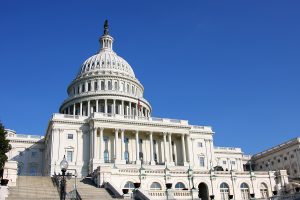 We've written about the government's ongoing efforts to improve their ratings when it comes to "customer" experience. Across government, agencies have made citizen experience (CX) a focus of their digital strategy. They are working to implement new technologies and processes to make it easier for citizens to get the information they need about government services. The progress agencies were able (or not able) to make came into focus in the way they were able to respond to the COVID-19 crisis. The measure of CX success can be looked at in two ways:
We've written about the government's ongoing efforts to improve their ratings when it comes to "customer" experience. Across government, agencies have made citizen experience (CX) a focus of their digital strategy. They are working to implement new technologies and processes to make it easier for citizens to get the information they need about government services. The progress agencies were able (or not able) to make came into focus in the way they were able to respond to the COVID-19 crisis. The measure of CX success can be looked at in two ways:
- How quickly were agencies able to transition to providing their normal level of service while working remotely?
- How responsive were agencies to increased pandemic-related citizen interaction?
While there were many speed bumps in getting government functions up and running from a distributed telework model, many agencies found that investments they had been making in telework specifically and digital government, in general, paid huge dividends in their COVID response. For example, the Nuclear Regulatory Commission had completed a full refresh of laptops meaning that all employees had up-to-date hardware and software to start their work from home adventure. Other agencies who had worked to incorporate technology, even as basic as e-signatures, found themselves able to move quicker than agencies still working with manual processes.
But, all the preparation in the world could not prepare for the scope and speed of the pandemic crisis. A study from the Information Technology Innovation Foundation looked at the performance of state unemployment websites and found that 26 state websites failed. The National Association of State CIOs found that about three-quarters of states have launched chatbots to help their agencies answer unemployment insurance or COVID-related questions and take the pressure off both websites and call centers. The Texas Workforce Commission was able to employ a chatbot named Larry to help with volumes that reached 98,000 online unemployment applications in one day. Larry has been able to answer 4.8 million questions for 1.2 million people. Continue reading



 Fall visits to the farmers market take us back to simpler times when people lived off the land. Today's farmers may provide the same "output" of food, but how they manage the growth and distribution of it has changed dramatically.
Fall visits to the farmers market take us back to simpler times when people lived off the land. Today's farmers may provide the same "output" of food, but how they manage the growth and distribution of it has changed dramatically. In place since 2014, the Federal Information Technology Acquisition Reform Act (FITARA) has aimed to provide guidance and checkpoints for agencies' modernization efforts. Over the years, the compliance status of the agencies has had its
In place since 2014, the Federal Information Technology Acquisition Reform Act (FITARA) has aimed to provide guidance and checkpoints for agencies' modernization efforts. Over the years, the compliance status of the agencies has had its 
